African violets may look small and subtle from a distance, but close up; they are magical to behold. Their petals often have a subtle sparkle, and their leaves are soft and fuzzy. In short, they are a delight for the senses.
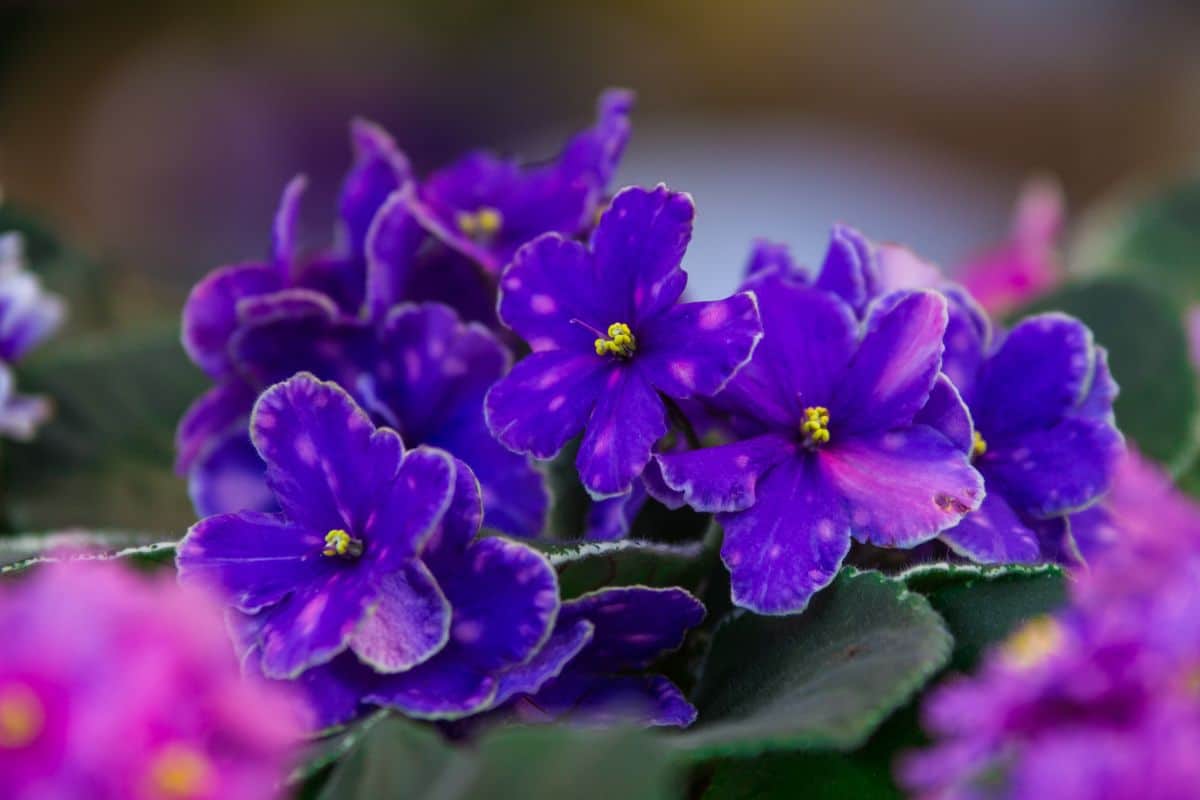
This post will help you start growing your own African violets, whether indoors or outdoors. You can jump to any section immediately using the advanced jump below, or read on for the full guide to growing and caring for these fascinating plants.
Jump to:
- What Are African Violets?
- African Violet Basics
- Where Do African Violets Grow?
- Why Grow African Violets?
- When Do African Violets Bloom?
- How Long Do African Violets Bloom?
- When to Plant African Violets
- Ideal Growing Conditions for African Violets
- How to Plant African Violets
- How to Propagate African Violets
- How to Care for African Violets
- Recommended African Violet Varieties
- Frequently Asked Questions About Growing African Violets
- Where to Buy African Violets
What Are African Violets?
It is always good to get started with the basics. What exactly are African violets?
The name “African violet” is actually quite specific. It refers to around ten species of plants within the Saintpaulia section of the Streptocarpus subgenus Streptocarpella. This genus, in turn, is part of the Gesneriaceae family. Phew, that was intense, right?
You don’t have to remember all of that, thankfully. You can just go on referring to them as “African violets.” Another name for them is “saintpaulias.”
One point of interest, however, is that African violets are not really true violets. True violets are those plants that belong to the genus Viola.
Despite that fact, a lot of people immediately picture African violets rather than true violets if someone mentions “violets.” African violets are incredibly popular both as house plants and as outdoor plants.
Even though there are only around ten species in the category of African violets, the number of cultivars is astonishing: more than 16,000 in all. So, there is no end to the variety you can enjoy.
Many people believe that African violets must be indoor houseplants, but this is not always the case.
If you enjoy a hot, humid climate in zones 11 or 12, you may be able to get away with outdoor African violets (we’re looking at you, Hawaii).
If you are in a lower climate zone, however, you probably are going to want to keep these in your indoor perennial garden. They are super finicky plants and will not do well if conditions are not as close to perfect as possible.
You might be wondering, “Well, can I grow African violet as a houseplant and just take it outside for part of the year?”
The answer depends on who you ask. Some gardeners reportedly do this with success, while others don’t. You can read an extensive and entertaining post on the matter at the African Violet Resource Center.
African Violet Basics
| Zones: | 11-12 |
| Blooming season: | Year-round |
| Expected height: | 3-6 inches |
| Soil: | Well-drained |
| Sun: | Filtered |
Where Do African Violets Grow?
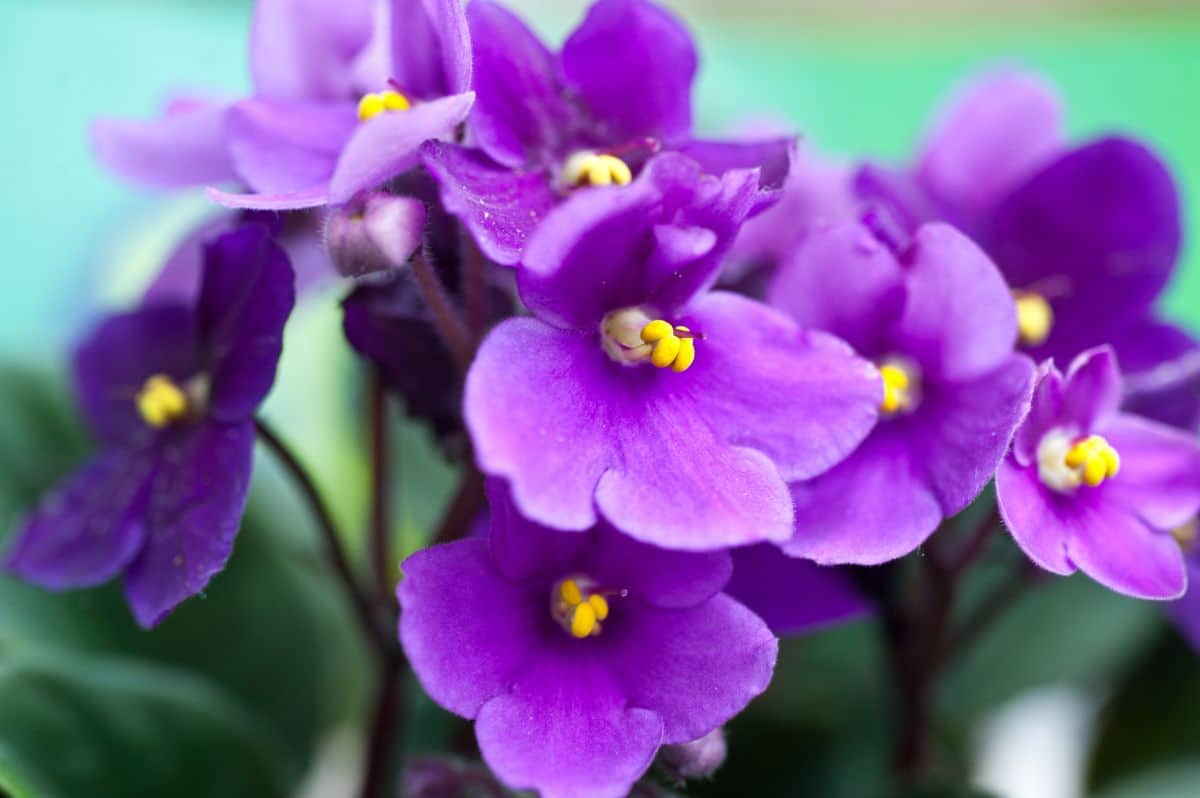
In nature, African violets grow in eastern Africa, especially in Tanzania. They can be cultivated outdoors in similar climates elsewhere or grown indoors.
Why Grow African Violets?
• Year-round flowers: How many other flowers can you think of with the potential to bloom all around the calendar? With proper care and conditions, you will almost always have African violet blooms to enjoy.
• Easy care: Once you get the basics down in terms of watering and fertilizing your African violets, there is not much else they need from you.
• Safe for pets: Most people keep African violets indoors, but you will be relieved to know that is just fine if you have pets. They won’t harm your cat or dog.
• Fine without a ton of light: If you have a hard time growing other flowering plants indoors due to lack of light, you will be thrilled to discover that African violets require only indirect light.
• Long lifespan: Your African violet can delight you for decades if you take care of it.
• Appealing textures and appearance: African violets are really distinctive and have some cool features that are relatively uncommon. You will love the sparkle of their petals and the furry texture of their foliage.
• African violet cultivars feature a wide range of bloom and leaf colors.
When Do African Violets Bloom?
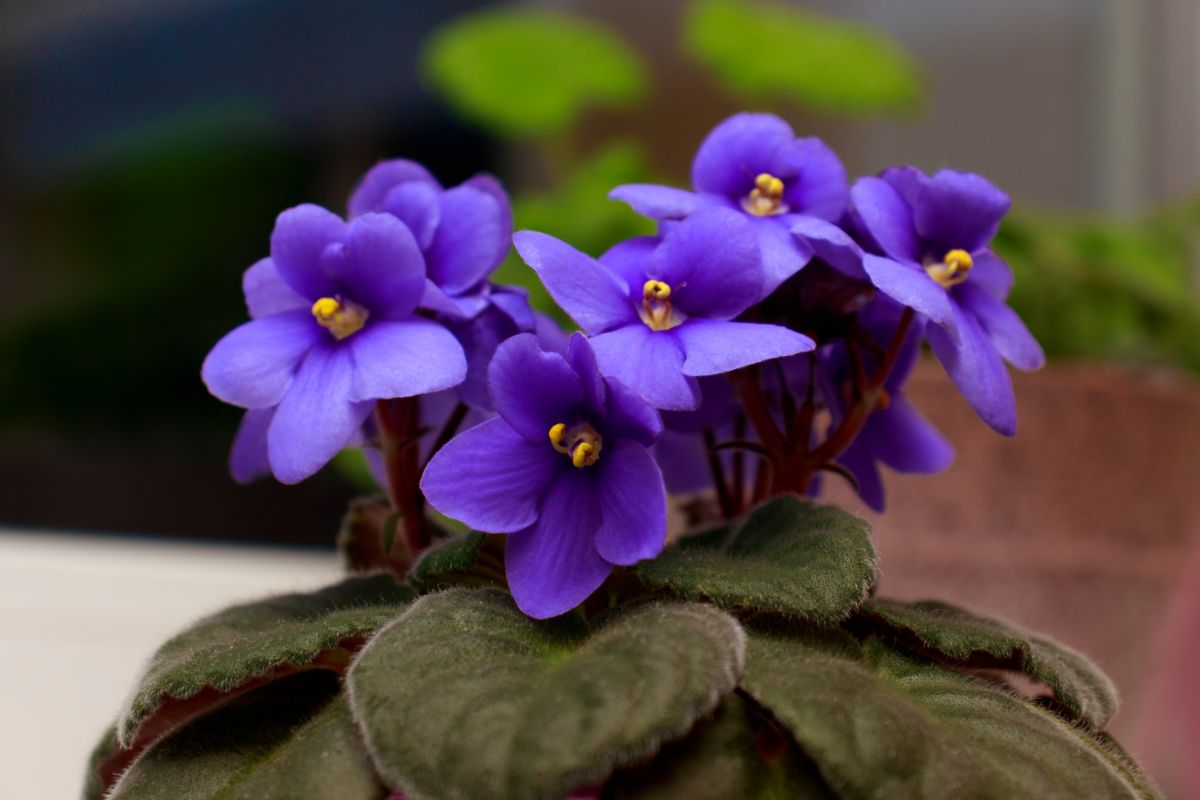
African violets can bloom at any time of the year. This is one of the coolest things about them!
In fact, your African violet should be flowering for anywhere from 10-12 months out of every year if you know what you are doing.
How Long Do African Violets Bloom?
Individual African violet blooms stick around for about 2-3 weeks at a time.
When to Plant African Violets
Generally speaking, this is usually not something you even need to be worrying about, as most people are going to grow their African violets indoors; no planting is necessary. Conditions in your home should not be fluctuating that much. That means you can bring home an African violet at any point of the year.
On that note, the author of this piece does happen to have an African violet living indoors in a home that does not have good climate control.
The temperatures in this house fluctuate up into the high 90s on a regular basis, sometimes past triple digits. At night, they frequently drop down into the 50s or 60s. Despite those significant temperature swings, the violet does just fine. It only flowers on occasion, but it is happy and healthy.
Ideal Growing Conditions for African Violets

How can you ensure these plants are healthy and produce beautiful blooms? Here are the ideal water, sun, and soil conditions for African violets.
How Much Sun Do African Violets Need?
African violets like plenty of indirect sunlight. But they do not do well in direct sunlight. So, an east- or north-facing window is considered most suitable. To provide even light, you should regularly rotate the container. Anywhere from 8-16 hours of light per day is adequate.
The duration of light in the wintertime can be too little for these plants to thrive. So, think about using fluorescent lights to provide some supplemental artificial light through that part of the year.
What Type of Soil is Right for African Violets?
Asking what the right soil type is for African violets is almost a trick question.
Optimara Violets explains, “A good potting soil for African Violets actually contains no soil (or dirt) at all. Good potting soil will be very light and porous, a quality that enhances aeration while keeping the soil moist but not soggy. Such potting soil will be made primarily of block-harvested sphagnum peat moss. Perlite or expanded polystyrene will be added to maintain optimal porosity.”
The site adds that one may wish to add some calcium carbonate in order to balance out the acid from the peat moss to achieve the optimum pH, which should be in the range of 5.8 to 6.2. This pH range will maximize the violet’s intake of nutrition.
How Much Water Do African Violets Need?
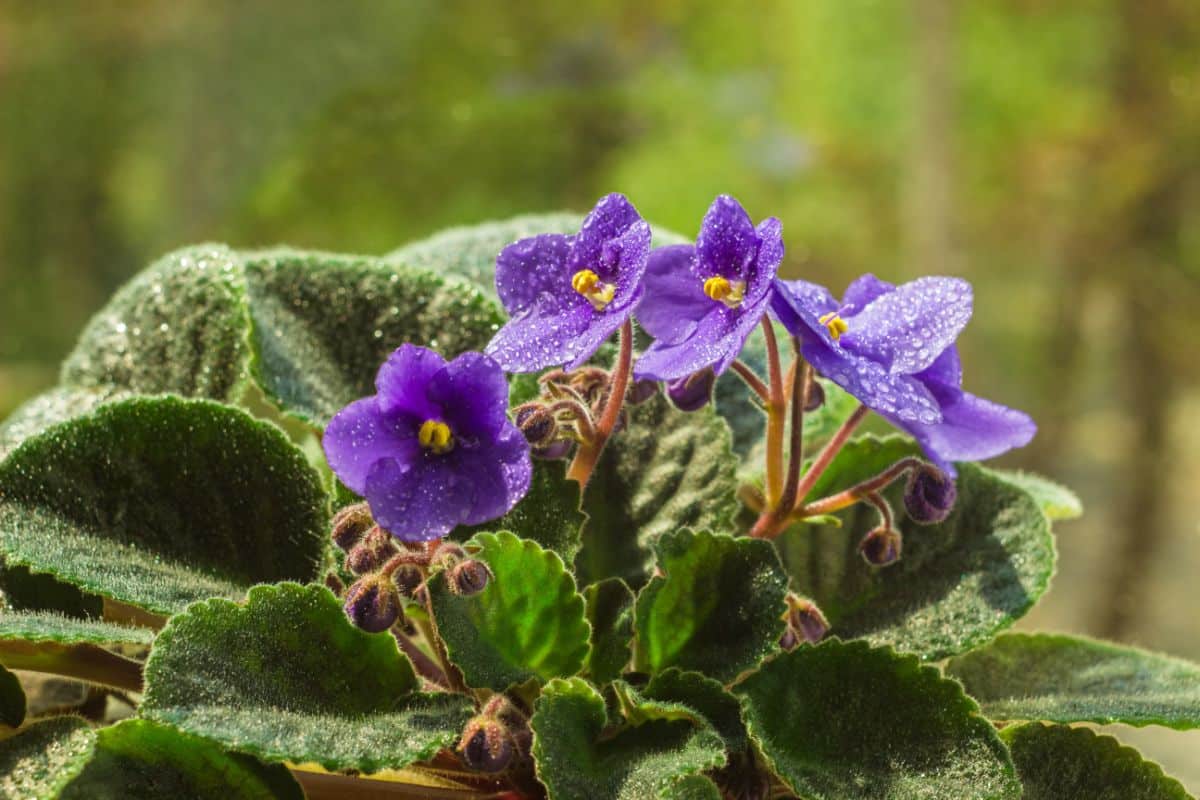
One of the trickier parts of African violet care is providing the right amount of water. New England Today Living writes, “The best guide is to feel the top of the soil: if it is dry to the touch, then it is time to water. African violets should be allowed to dry out between each watering for best results. Overwatering can kill a plant. The fine roots of an African violet need air, which cannot penetrate a soggy wet soil mass. Once you’ve mastered how to water African violets, half of your work is done.”
The site adds that the temperature of the water is critical. African violets do not handle cold water well. So, you should use warm water or lukewarm water. Drainage is also essential, as is keeping water off of the leaves, particularly when the sun is shining on them. Water on leaves + sun = leaf spots.
How to Plant African Violets
We are going to skip ground planting instructions for African violets since so few people actually plant them in their flower beds. They almost always live in pots.
Container Planting
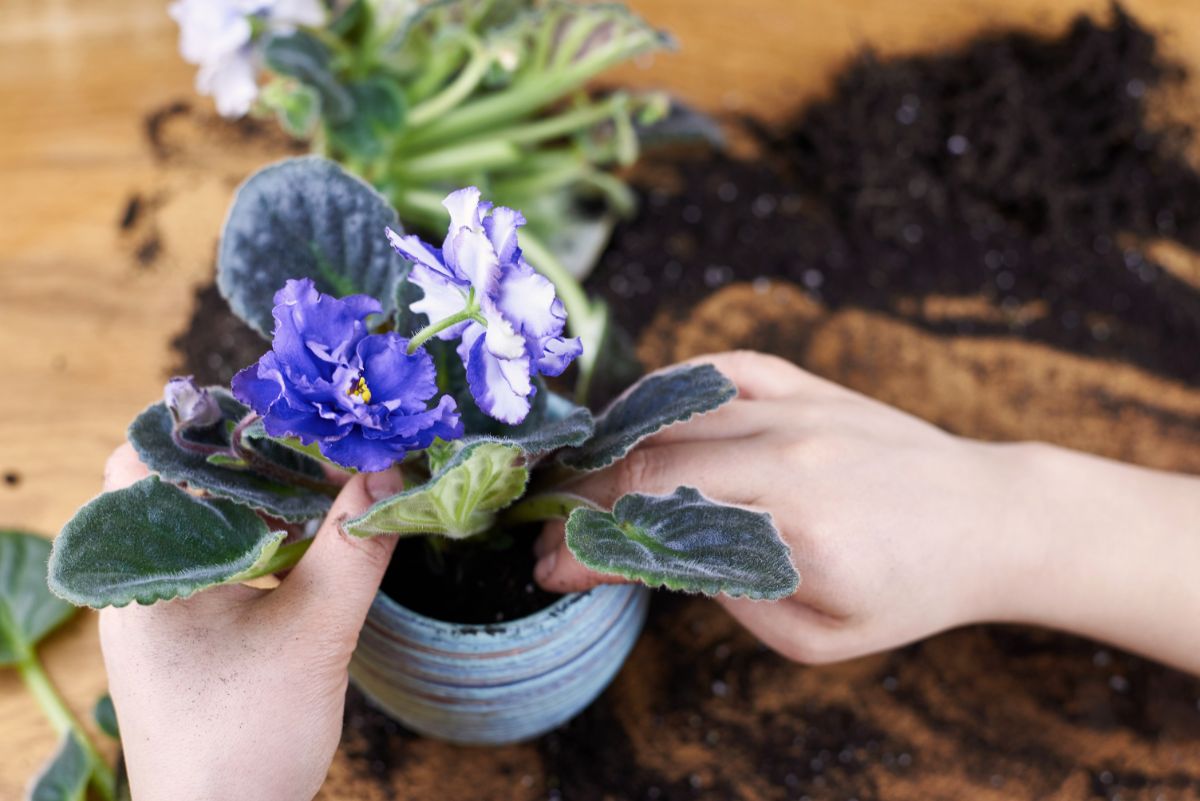
1. Get a container with drainage holes and fill it with potting mix. You can find mixes that are tailored to African violets.
As for the pot itself, it should not be too large. Violets bloom more profusely if they are slightly root-bound.
2. Carefully remove your African violet from the nursery container it came in.
3. Insert the plant into the potting mix and fill it in. The crown should not be buried.
You do need to re-pot African violets every several years.
How to Propagate African Violets
You can propagate African violets from cuttings or seeds. Dividing the plants also works. Let’s go over step-by-step directions for both.
Starting African Violets from Seed
You can start African violets either from seeds you have harvested or seeds you have bought. As a beginner, you will probably be more successful starting with store-bought seeds.
1. Fill small containers with drainage holes with potting mix. This can either be a seed starting mix, or it can be a mix that is specific to African violets.
2. Use a spray bottle to moisten the potting mix. Wait for the excess water to drain out. It is important to do this step prior to adding the seeds since they are so easy to wash out.
3. Sow the seeds on top of the potting mix.
4. Cover the top of each container with plastic wrap or a clear plastic lid.
5. Put the containers where they are able to receive 10 hours of light per day. You can use sunlight or grow lights. If you are going with sunlight, it should be indirect. The ideal temperature range is 70 degrees Fahrenheit to 80 degrees Fahrenheit.
6. Wait for your seeds to germinate, checking on them regularly. If the potting mix is drying out, use your spray bottle again to moisten it.
7. Within about 2-4 weeks, the seeds should germinate. Some may take a little bit longer than that.
8. Take the cover off. Keep the soil moist as the seedlings develop. Eventually, you can go ahead and transplant them into larger containers that can serve as their long-term homes.
Starting African Violets from Cuttings
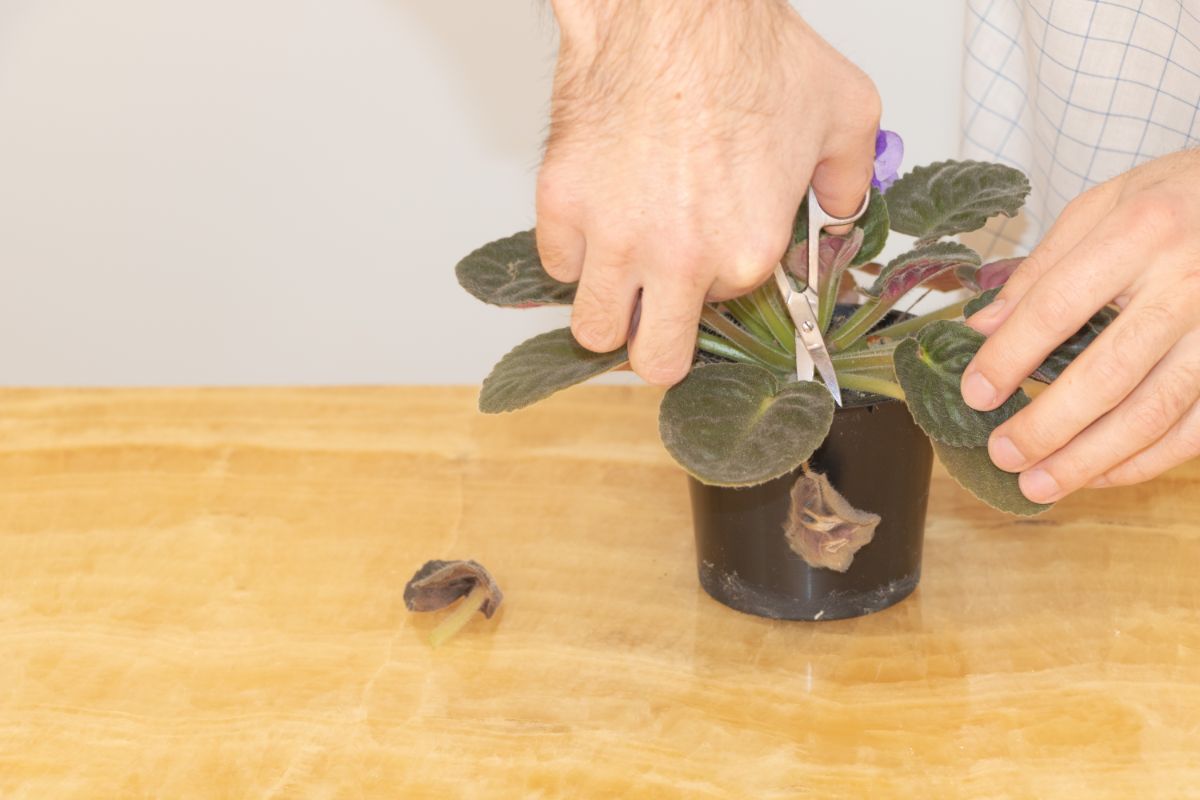
You can use leaf cuttings as another method to propagate African violets. You may find this easier than growing them from seeds. Here are the steps.
1. Sanitize a razor. Use it to cut off a leaf from the parent plant. The ideal leaf is neither too young nor too old.
2. Slice through the top of the leaf with your razor. You will discover this little trick helps speed up the process.
3. Take a second look at the stem of the leaf. If it does not have a cut at a 45-degree angle, try making one.
4. Get a little container and fill it with a light potting mix.
5. Use a spray bottle to moisten the potting mix. If there is any excess water, allow it to drain out before you proceed.
6. Use a chopstick or similar object to create a hole. Then, push the stem of the leaf into it. You want the entire stem to be buried, with only the leaf itself above the soil. Gently firm the potting mix.
7. Put a plastic bag or other cover over the top of the container, making sure that it is not making contact with the leaf.
8. Choose a location for your leaf cutting to the root where it is exposed to the indirect sun. Moderate warmth is ideal as far as temperatures go. You do not want the plant to get hot.
9. Eventually, the African violet will develop plantlets. Continue to keep the soil moist and care for them for around 4-5 months.
10. Now comes a tricky part. Carefully take the cutting and attached plantlets out of their container. Gently wipe away the loose potting mix so you can get a better look at what you are doing.
Next, remove each plantlet from the leaf. You can usually do this by hand, but a knife might sometimes be necessary.
11. Get containers for each of the individual plantlets, and fill them with potting mix. Use a chopstick to make holes in the potting mix in each container, and insert a plantlet into each one.
12. Water the plantlets (not too heavily).
Did you have any plantlets without roots? Those ones should be covered for a little while with a plastic bag or lid. Once again, the bag or lid should not touch the plant. After several weeks, it can come off.
How to Divide African Violets
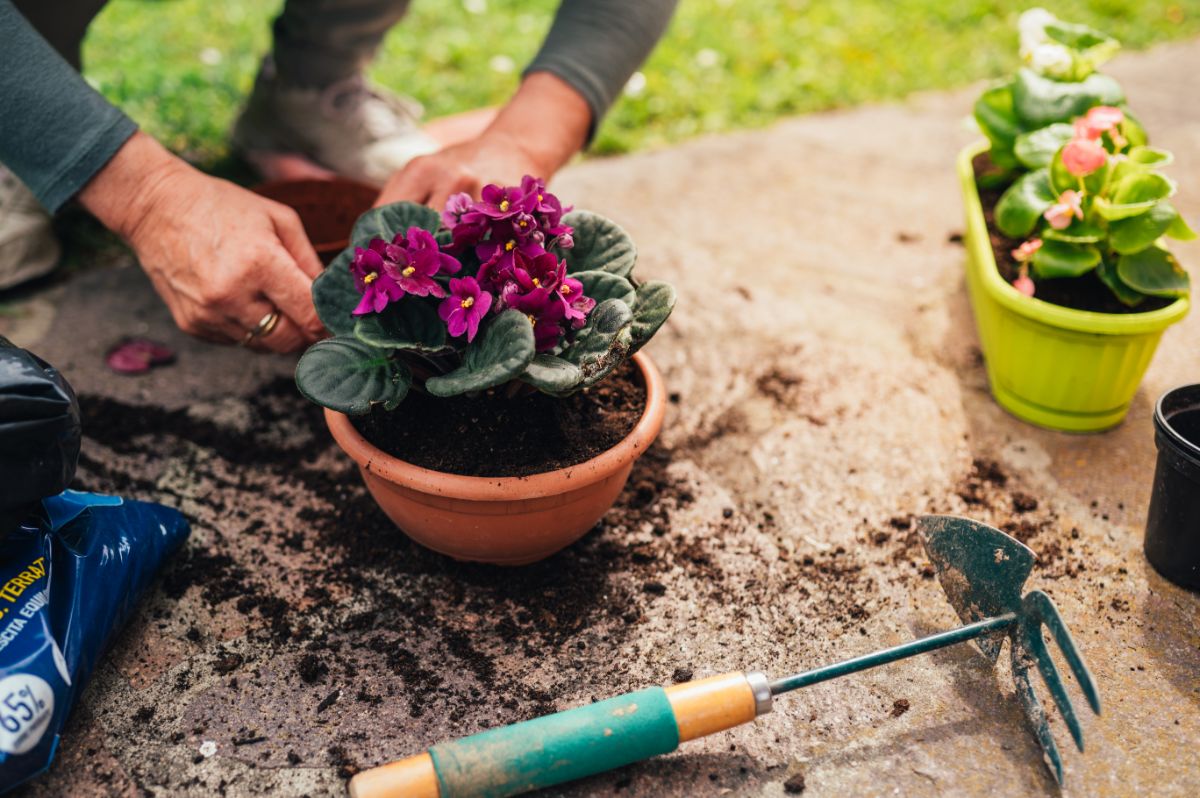
When you re-pot your African violets every few years, you have the option of dividing some of the larger ones. Here are the steps to doing it.
1. Begin by carefully removing the plant you want to divide from its previous container.
If you are having any difficulties with this step, stop what you are doing. Tap the container around the sides against something like the edge of a counter.
Since African violets don’t want their homes to be too roomy, it comes as no surprise that they sometimes are hard to loosen and remove.
After you have tapped around the sides, try removing the plant again.
2. Gently brush away excess soil. Cut the African violet into halves or thirds, depending on how big it has gotten. There should be intact stems, leaves, and roots for all the divisions.
3. If you find any wilted leaves, trim them off.
4. Prepare your new containers by adding fresh potting soil to them.
5. Transplant the new, smaller African violet plants into their new containers, and finish filling in the soil.
MarthaStewart.com says, “Add more soil to cover the root system, without burying it any deeper than it was in the old pot, and pat down gently. When resettling a plant deeper in a pot, gently scrape the bare stem (as if you were scraping a carrot) to remove the heavy bark that forms when leaves are shed.”
6. Water deeply.
How to Care for African Violets
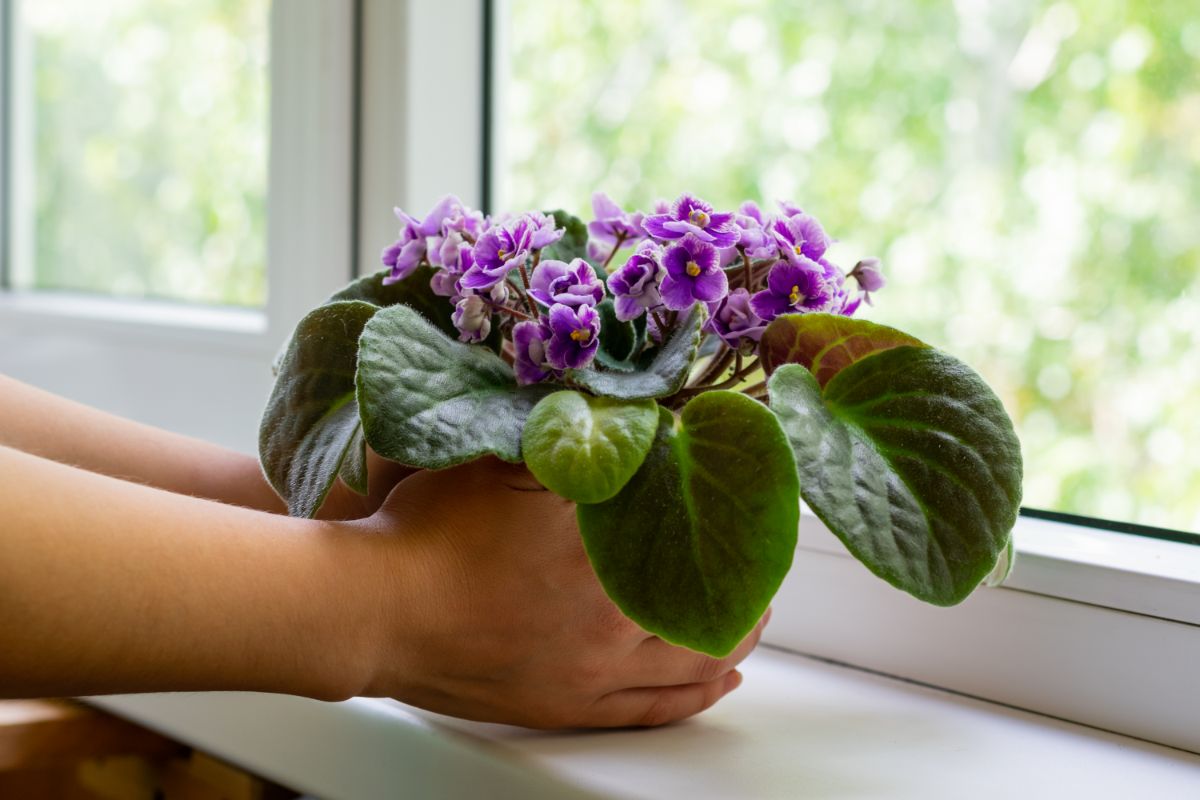
Now that you know how to plant an African violet houseplant or divide one, we can go over further instructions for African violet plant care.
How to Fertilize African Violets
There are actually African violet fertilizers you can use. We recommend going with one of these products rather than a general all-purpose fertilizer. Follow the directions on the African violet fertilizer product to apply it properly.
How to Mulch African Violets
African violet care does not require mulching because you are almost certainly going to be growing them indoors.
If you do live in a climate where they grow outdoors, you still probably will not have to mulch because conditions will be consistent enough that you will not need mulch for insulation.
How to Stake African Violets
African violets are small plants and do not require staking. Yay! One less thing to worry about when taking care of your flowers.
How to Prune African Violets
You do not need to trim African violets in the way you do other plants you grow outside, but there are a couple of pruning tasks you need to keep up with.
The first is to make sure you are deadheading the blooms. Pinching them off after they wilt will help the plant to produce more for you to enjoy.
The second task is one you need to take care of monthly. Look at the bottom leaves, and take off a few of the ones that are no longer looking so great.
Speaking of leaf care, there is one extra “grooming” task you may need to do with African violets that you do not do with most other plants.
You might need to keep a soft brush on hand that you can use to wipe off the leaves. The reason is that dust and debris can build up on them surprisingly easily owing to their fuzzy texture. A paintbrush works perfectly for this task.
Only brush off your African violets when they really need it. If you do it too frequently, you will only irritate them (see the section two sections below, “Try Not to Touch Your African Violets”).
Overwintering African Violets
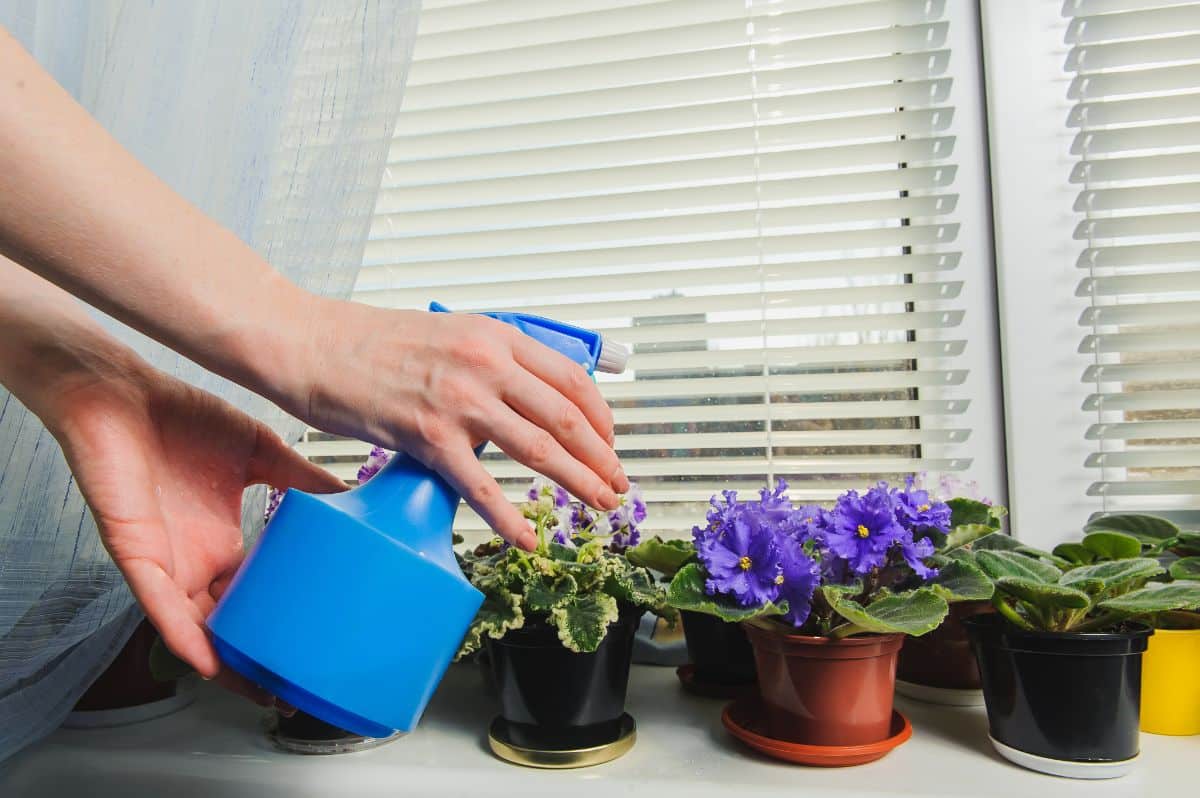
As we discussed earlier in this post, some people apparently manage to keep their African violets outdoors during the summer and then bring them indoors during the winter months.
Regardless of whether you decide to overwinter your African violets indoors or keep them there throughout the year, you must make sure you keep them away from cold, drafty parts of your home.
African violets should be kept in moderate humidity when possible. High humidity can be problematic indoors, especially if they do not have a lot of air circulation. At the same time, air that is too dry is also not great for them.
As far as light conditions in winter go, it is generally recommended to choose a window that faces east and keep your violet there where it can get that morning sun.
When you are ready to take the violets outdoors again when the weather warms back up, be sure to harden them first.
Try Not to Touch Your African Violets
There are going to be days when you are going to be so tempted to touch the soft leaves of your African violet. But alas, while this may be a pleasant sensory stim for you, your violet may not appreciate all that hands-on attention.
You are not alone if you feel the urge to pet your violet leaves as if they are, well, a pet. In fact, this is such a common habit that it has actually received scientific study by Oklahoma State University researchers!
This article explains, “While it's known in some cases, such as with tomatoes, that brushing plants can be used to control plant size and prevent legginess, researchers found that African violets didn't like it at all. Two cultivars of African violets were brushed five times a day. They were brushed for 30 or 90 seconds each time. Control groups were compared to groups brushed with a naked hand, treated with hand lotion and with a gloved hand. They found plants brushed with the lotion-treated hand had higher damage ratings and smaller and lower quality leaves when compared to the gloved hand. Both treatments created more damage than the control group. So next time you're tempted to pat your African violets, resist!”
Are African Violets Vulnerable to Diseases or Pests?
Some diseases that African violets can be affected by include bacterial blight, botrytis blight, powdery mildew, phytophthora crown rot, pythium root rot, and Rhizoctonia crown rot.
Pests that can bother African violets include nematodes, cyclamen mites, and mealybugs. There may also sometimes be issues with slugs or snails.
The worst of these pests is usually the cyclamen mites. You will not be able to see the mites, but you may notice the central leaves look stunted and curled. The flowers may look similarly deformed. You also might notice that fresh foliage looks oddly gray and hairy.
Mites are most likely to be a problem in environments that are excessively cool and/or humid. Clemson Cooperative Extension Home & Garden Information Center offers more information on these and other pests and diseases of African violets, along with control instructions.
Recommended African Violet Varieties
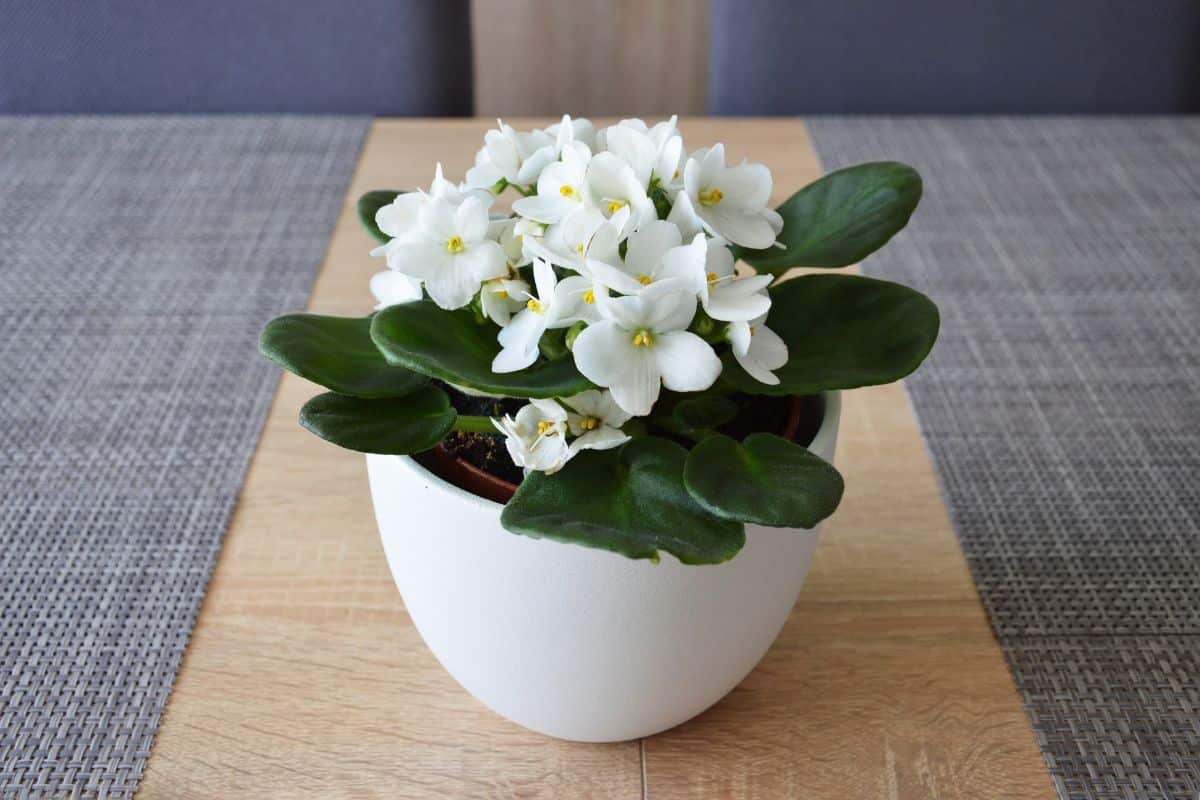
Did you know there are many charming types of African violets you can grow? Here are a few of our favorite cultivars:
• Rolling Dark Waters: If you want a type of African violet with a really iconic appearance, this cultivar will delight you. The leaves are serrated, and the blooms are a deep bluish violet.
• Little Trio: For an African violet cultivar with pale blooms, consider “Little Trio.” This cultivar is named for the trio of hues that show up on the petals: white, lavender, and light green.
• Champagne Pink: This semi-double African violet produces variegated leaves in green and cream. The blooms, of course, are pink.
• Crimson Ice: This cultivar of African violet produces blooms with petals that are white and crimson (depending on the plant and the lighting, it looks a bit purplish).
• High School Sweetheart: Wow, if you want striking blooms, this is the cultivar for you. The flowers on this type of African violet are bright pink with contrasting pale green ruffled edges.
• Rambling Moonbeam: For a trailing cultivar of African violet that produces large white flowers, you cannot go wrong with this beauty.
• Sequoia: One eye-catching cultivar of African violet you will fall in love with is “Sequoia.” This cultivar features double pink blooms with dense petals. They look almost like miniature roses.
• Lonestar: This cultivar produces African violet blooms that are white with just a dash of dark purple around the edges of the petals.
• Precious Red: It will surprise you just how deep red the blooms of this beautiful cultivar are.
• Golden Eye; This African violet cultivar will steal your breath away. The leaves have a variegated appearance with a mixture of green and creamy pink. The blooms are creamy, but what will really catch your eye are their yellow centers.
• Zephyr: Here is a type of African violet that features breathtaking blooms in pale pink and white with ruffled edges.
• Silver Romance: Another striking option is this African violet with dark green leaves and contrasting creamy edges. The blooms are a lovely, muted, rosy color, offering a romantic appearance.
• Loyalty: The variegated foliage with wonderful contrasting cream and dark green will capture your heart as much as the deep pink blossoms on this African violet cultivar.
• Broadway Star Trail: If you want an African violet cultivar that features really dense white blooms, you will want to bring home this trailing cultivar.
Those are just a few cultivars of African violets that help to showcase the surprising variety to be found within these ten species. There truly is something for everyone.
Frequently Asked Questions About Growing African Violets
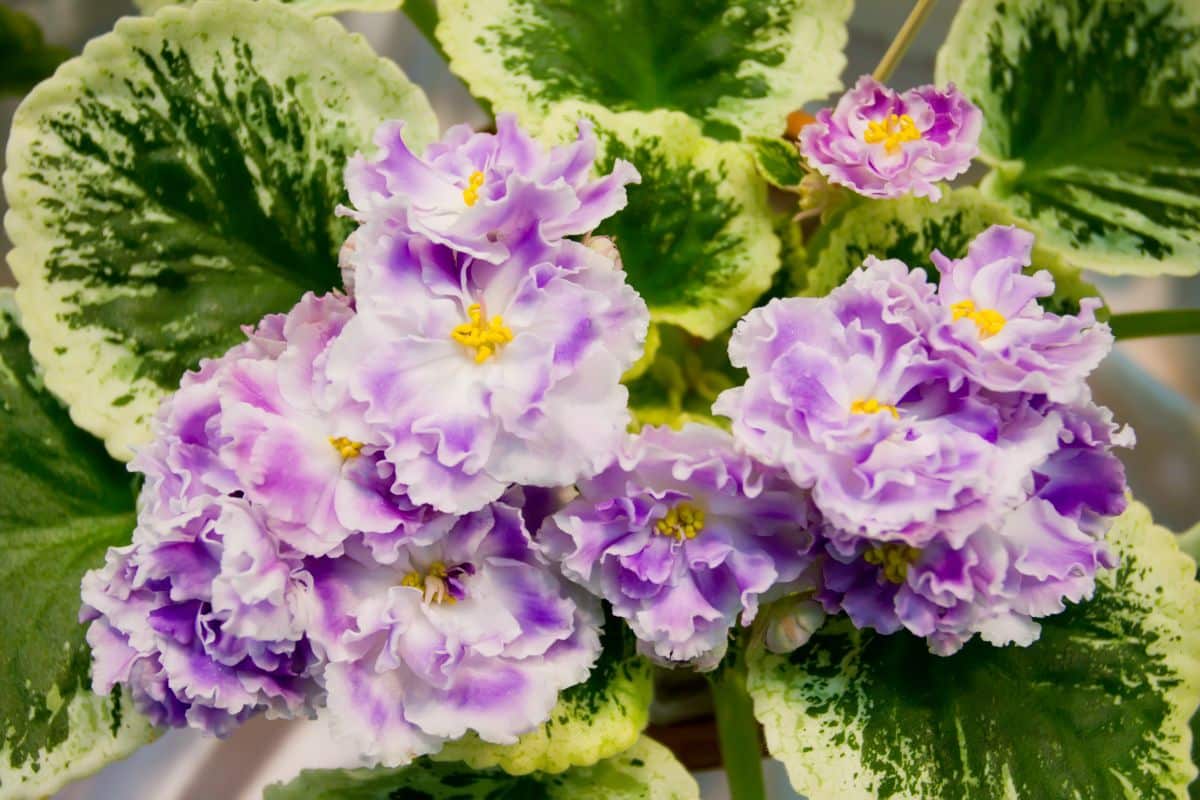
Insects are most likely to be eating your African violets, but they could also be slugs or snails.
Thankfully, pests tend to be less of an issue for indoor plants than outdoor ones, but they can still find their way in, especially if you bring some of your plants in and outdoors throughout the year.
You will be happy to learn that African violets are not poisonous to cats, dogs, or horses. You can grow these in your home without worrying about your pet (that said, hopefully, your cat does not harass your violet by rubbing on its leaves).
No, African violets are not toxic to humans.
As with the bathroom question below, you will run into contradictory advice about whether or not African violets want to be root-bound.
Being as that is the case, it seems that, if anything, African violets want to be slightly root-bound.
Being very root-bound will be too restrictive. But they do not want super roomy containers either.
Possibly. Whether or not African violets will thrive in bathrooms seems to depend on who you ask.
CBS News says, “African violets like humid rooms, so a sunny bathroom or kitchen window can work well.”
MasterClass, on the other hand, says, “The fuzzy leaves of African violets need to stay dry, or they will start to rot. African violets grow best in dry places like home offices or living rooms but should stay away from high-humidity locations like bathrooms or kitchens.”
So, it seems that your mileage may vary considerably here. You can give it a try, but if your African violet is not responding well to the humid conditions of your bathroom, you should move it somewhere drier.
African violets are year-round blooming perennials. Not only do they bloom all year every year, but they can reward you with blooms over a very long time span with proper care. Some African violets are reported to have lived for up to half a century!
Where to Buy African Violets
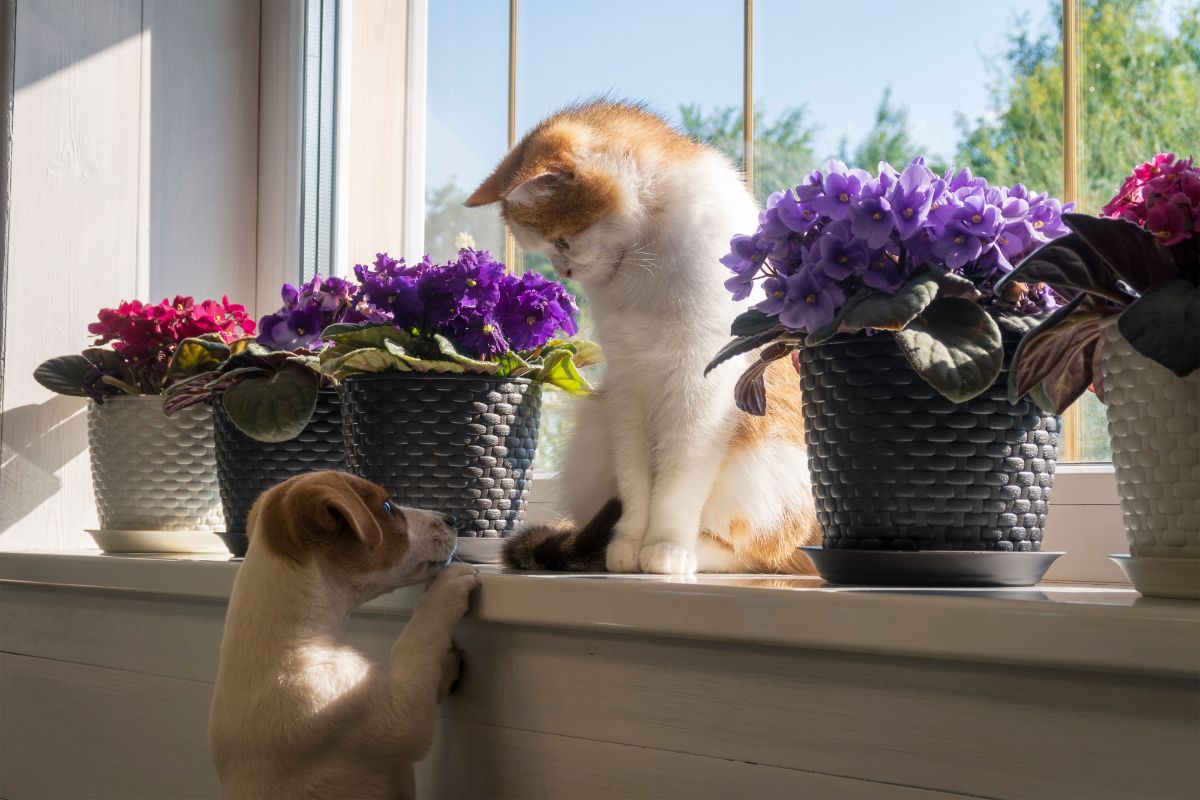
If you are enchanted by African violets and want to bring their beauty to your own indoor garden, you can shop for them online. Click below to browse African violets now.

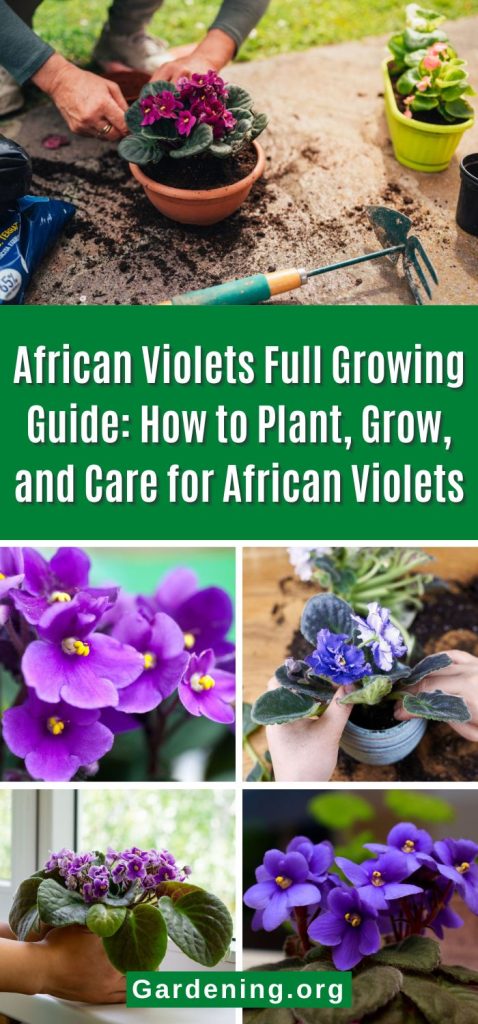
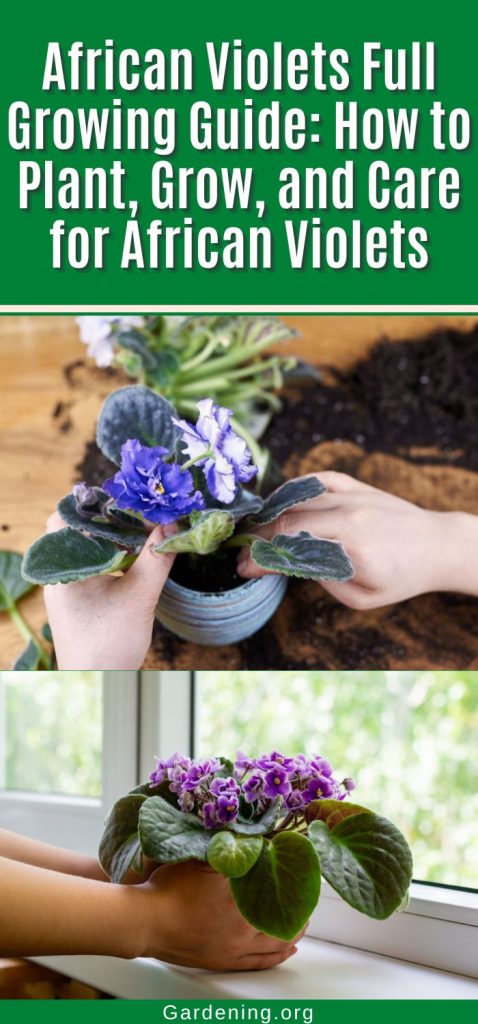
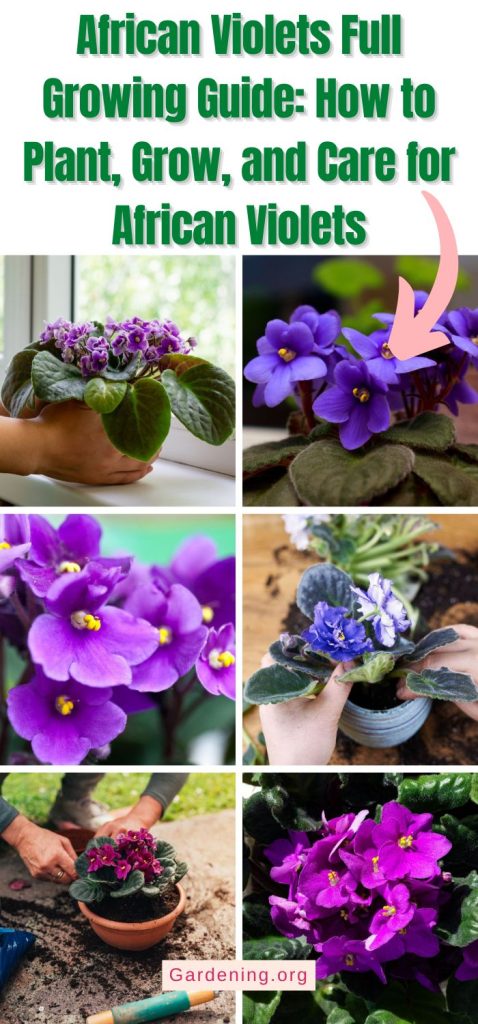
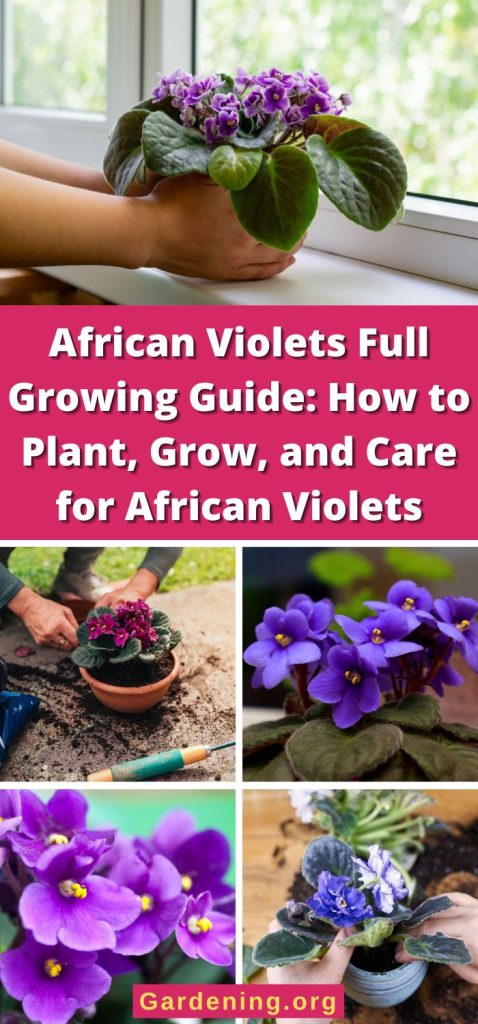
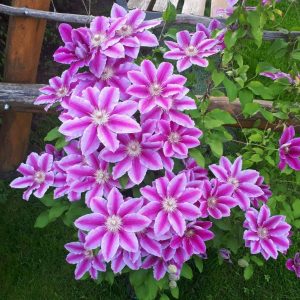
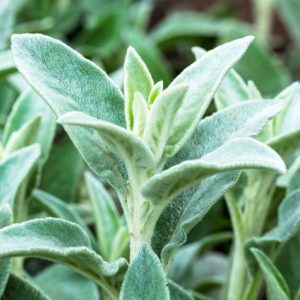

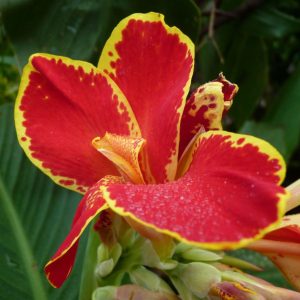
Karen Cox
I have owned African Violets for over 40 years. I have thoroughly enjoyed them. I found this to be an excellent article on care of African Violets. Thank you for publishing it.
Stephanie
I concur.
Brant Zbinden
buenos dias, idealistic blog on lardaceous loss. such a thing helped.
Ellen
Can someone please guide me regarding what to do when the flowers die?.Do I cut the spent flowers? If so? How and where does one cut to remove them? What to do to encourage them to produce more flowers?
Thank you.
Mary Ward
Pinch off flowers below the spent bloom when they start to die back. Good care (what is outlines in this guide), will bring your violets back into flower. If they're not re-flowering, address light first.
Debra Baker
This article answered your question. You simply pinch off the faded flowers and that promotes new blossoms, and growth.
Stephanie
This is a very informative article. Thank you.
Jenny Korse
I have grown African Viiolets for over 50 years. First encountered them in NJ in 1976 - a tiny pot with an adorable little plant. I was hooked. Since moving back to Denmark, I have ALWAYS had windows filled with all kinds of colors. I absolutely love them. Wouldn't want to live without them.